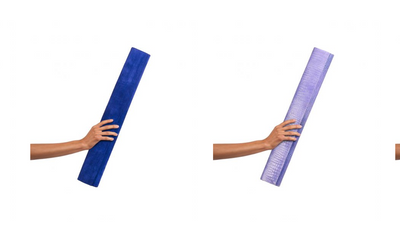You Snooze, You Lose: Tough Lessons for Fashionprenuers Against Fashion Empires
A lawyer specializing in intellectual property law tells us why African designers need to protect their ideas.
The following was originally published as a post at LizLenjo.com. Liz Lenjo is an Intellectual Property, Entertainment, Media and Fashion Law Attorney in Nairobi, Kenya and a World Intellectual Property Organization scholar on international intellectual property law.
Once upon a time, I had a conversation with a Kenyan fashion designer. I was rather curious as to whether he has ever sought legal counsel for his business. His reply was rather puzzling. “Clothes are just clothes” he said. “Who needs a lawyer in fashion?” he retorted. At the time of this conversation, my love affair with intellectual property law was still raw, but I knew without a doubt that the designer was quite clueless about intellectual property rights.
Enter 2016/2017, so much has been happening in the business of fashion. And especially for African designers and brands. Lately, we have seen impressive representation of African designers in some of the leading fashion weeks around the world. Just this year for the New York Fashion Week Fall 2017, we had Kenyan designers showcase at the glamourous event. Including Deepa Dosaja, John Kaveke and Wallace the designer behind the bag collection Leather by Eden that accompanied John Kaveke’s collection on the runway. I have tried to conduct an online search to see what the likes of Vogue and New York Fashion Week have reported on our beloved designers and I have not been successful. The traces come down to local publications unfortunately. Perhaps a subject to a future blog post on contract negotiations and considerations for a fashionprenuer. I digress.
Going back to the trip down memory lane on the conversation with the unnamed fashion designer, it is unfortunate that most fashion designers in Africa are yet to embrace the role legal services play a role generally in the fashion business. A recent Facebook post and article by OkayAfrica online magazine made this blog post even more necessary as the subject of “creativity theft” continues to be a phenomenon in the fashion industry. The conversation should now take the tangent, “How do we proceed from here to avoid such in the future.” The answer is simple—Intellectual Property Protection and Management.
This blog post has been inspired by the article published by OkayAfrica about Senegalese designer Sarah Diof and YSL over a “baguette shaped clutch purse”. The question here becomes “What legal steps did she take before sharing her look-book and the fashion shoot for the collection? Multiple fashion and design empires find strength in securing their intellectual property assets. With the use of trademarks, copyright, industrial designs and trade secrets brands like Christian Louboutin, Yves Saint Laurent, Dior, Adidas, Gucci, Prada and many more have intellectual property portfolios that African designers and fashion houses should admire and desire. It is what keeps these brands relevant and in business to date. Had Sarah Diof had some intellectual property protection to the design and in the relevant territories (because intellectual property protection is territorial) the content of the article would be different and would showcase the foresight by the designer to secure her legal and proprietary interests.
Proving ownership and demonstrating intellectual property rights in the fashion industry is a very intricate and delicate process, especially when you find yourself in litigation on the question of who owns what and how. The case between Louis Vuitton and New York based designer LVL XIII over metal plate on a pair of sneakers demonstrates how a fashion entrepreneur and design house needs to be smart with their intellectual property portfolio and strategies that accompany it. LVL XXIII put in a good fight. They could have done better if they had managed to have some of the elements proved in court as captured in Fashion Law Blog post. (LVL XIII Brands, Inc. v. Louis Vuitton Malletier SA et al. (1:14-cv- 04869).
To cut the long story short, before a designer hits the runway or rushes to create an awesome fashion spread for a magazine or billboard, make sure the creations you are not willing to lose has been secured as an intellectual property assets. Once it is made public all claims and rights are almost automatically lost, especially when a powerful brand beats you to it. The burden to prove that it belonged to you in the first place is a tough one and a painfully expensive one both monetarily and time wise.
You snooze you lose dear fashionprenures. If Sarah Diof had foresight and did the necessary she would have the strength to fight YSL on the alleged “theft” legally referred to infringement. I hope you are taking notes.
*Real knowledge is to know the extent of one’s ignorance. -Confucius
